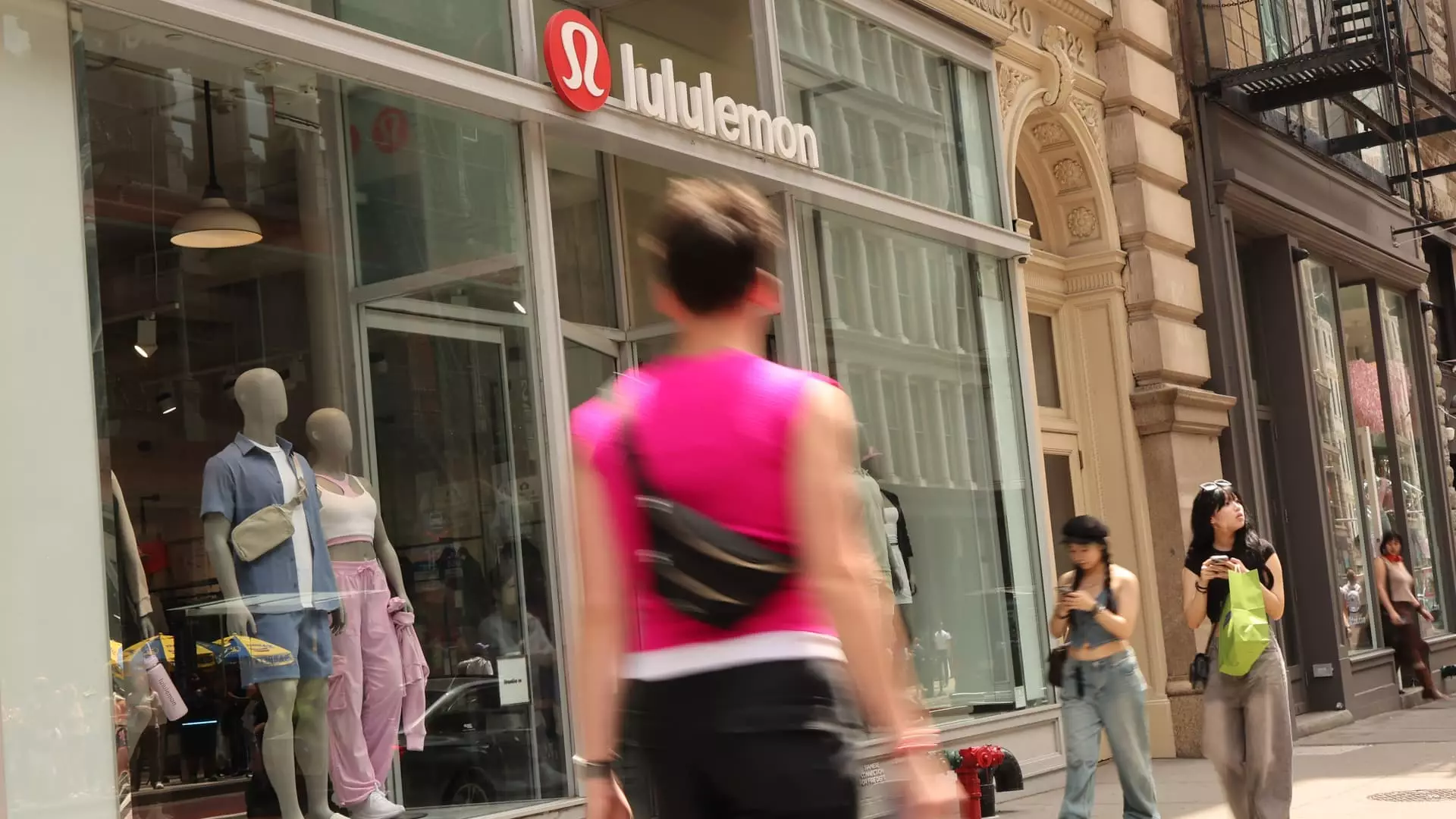In a world where billion-dollar brands rise and fall with the speed of a tweet, Lululemon Athletica has just taken a nosedive that should send shockwaves across the retail sector. While the yoga-pants empire reported fiscal first-quarter earnings that technically beat Wall Street’s estimates—earnings per share of $2.60 compared to expectations of $2.58—these razor-thin margins mask deeper issues that cannot be ignored. Following the announcement of lowered full-year earnings guidance, Lululemon’s shares plummeted nearly 20%, painting a grim picture of a company that might be out of touch with the economic climate it inhabits. This isn’t just another dip in the market; it reveals a troubling undercurrent of vulnerability that could affect its long-term viability.
Tariff Turbulence
CEO Calvin McDonald’s optimism in navigating a “dynamic macroenvironment” feels hollow when juxtaposed against the stark realities of rising tariffs and sluggish consumer confidence. The recent introduction of tariffs, stemming from an unpredictable political landscape, has left many retail brands, including Lululemon, scrambling to revise their profit outlooks. If major players like Macy’s and Abercrombie & Fitch are scaling back in response to these economic pressures, isn’t it time for Lululemon to confront the inevitability of market volatility rather than simply affirm its existing strategies? This dissonance between corporate narrative and economic reality paints a precarious picture for investors who might assume that premium brands are immune to financial strain.
Cuts Aren’t Just for Profits
The decision to cut full-year earnings guidance from a range of $14.95 to $15.15 to a new estimate of $14.58 to $14.78 is, in itself, a red flag. It speaks not just to the company’s inability to forecast accurately but also to a troubling failure to adapt to external pressures. Analysts had expected an earnings per share figure of around $14.89, which further illuminates how the misalignment between corporate forecasts and market expectations is costing the company dearly. A finance-savvy consumer is no longer impressed by mere earnings beats; they expect brands to demonstrate agility and foresight.
The International Conundrum
Lululemon’s reliance on international manufacturing—40% from Vietnam, among other countries—adds another layer of complication to its already precarious position. This dependence could backfire, especially as global supply chains grow ever more complicated—and not necessarily thanks to efficient management. While Lululemon shuns ownership of manufacturing facilities, relying solely on suppliers places the brand at the mercy of fluctuating international economics and potential geopolitical tensions. In market conditions where instability reigns, this strategy feels like a high-stakes gamble rather than a smart business model.
Consumer Sentiment is Slipping
Despite the optimistic facade, the numbers tell a different story. The 1% year-over-year increase in comparable sales falls significantly short of Wall Street’s expectations for a 3% gain, while domestically sales have actually declined. Yes, international markets posted a 6% increase, but with the Americas anchoring overall performance, Lululemon risks alienating its loyal customer base at home. In an era where brand loyalty is fragile, any sign of weakness could drive consumers toward competitors like Nike, who have also indicated price hikes due to tariffs.
Future Trajectories
Lululemon’s predicted earnings per share of $2.85 to $2.90 for the upcoming second quarter remain below Wall Street’s forecast of $3.29, further signaling an unsettling trend. The notion that premium retail brands can write their own rules is rapidly eroding, particularly when the economic landscape is marked by uncertainty. Stakeholders have a right to question whether Lululemon can leverage its competitive advantages effectively—or if it is becoming a case study in missed opportunities.
In an ever-changing economic climate and an increasingly discerning consumer base, Lululemon’s future trajectory must be critically examined. The company can no longer afford to rest on its laurels while external pressures loom large. As investors reflect on the implications of this recent downturn, one thing is clear: the path ahead will demand more than just positive earnings reports; it will require resilience, adaptability, and strategic foresight.


Leave a Reply